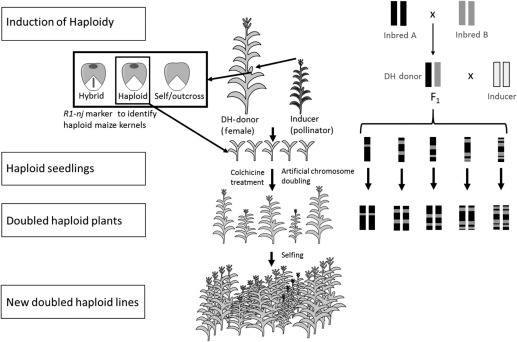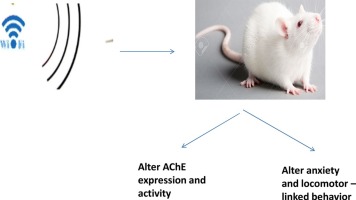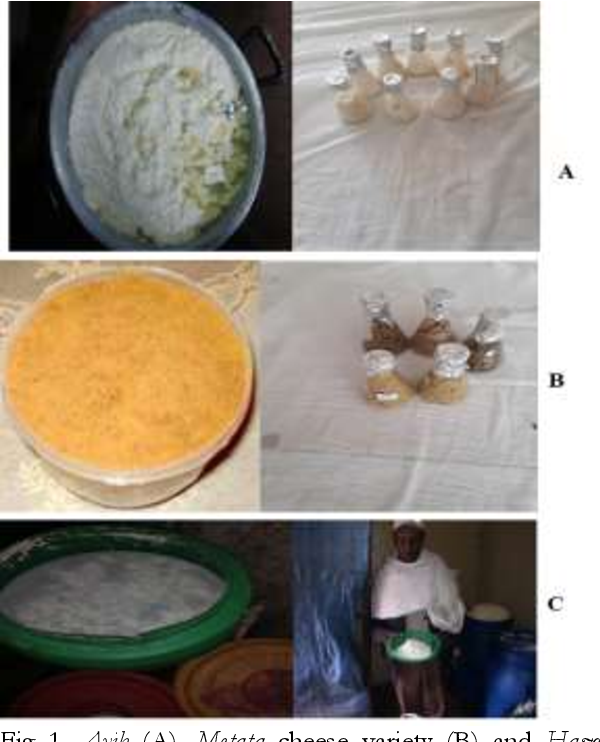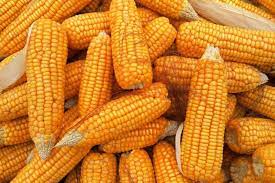Strength and Keeping Quality of Abomasum Rennet and its Influence on Yield and Quality of Halloumi Cheese made from Cow Milk
Downloads
Abstract: Halloumi cheese was made from cow milk using commercial rennet, and bovine and ovine rennet. But in Ethiopia commercial rennet is expensive and unavailable for smallholder dairy farmers. To solve this problem an experiment was conducted to evaluate strength, quality and suitability of locally available bovine and ovine abomasum rennet for halloumi cheese making in comparison with commercial rennet. The treatments consisted of bovine rennet, ovine rennet and commercial rennet (control) arranged in a completely randomized design (CRD). Rennet was extracted from bovine and ovine abomasa and comparisons were made with commercial rennet. Shelf life and clotting activity of the extracted rennet were determined using Halloumi cheese making. The result of the study indicated that commercial rennet (0.189 ± 0.02) had a higher clotting activity and short clotting time than bovine (0.179 ± 0.02) and ovine (0.023 ± 0.02) rennet. Bovine rennet was active up to nine weeks of storage while ovine rennet was active only up to six weeks of storage after which both types of rennet start losing their clotting activity. A highly significant difference was observed between locally and commercially produced rennet in terms of rennet and curd pH. The use of bovine and ovine rennet in the Halloumi cheese making was acceptable to the sensory panelist and scored more than the average for overall acceptances (Score >3.5). In conclusion, bovine rennet showed better strength and quality compared to ovine rennet and could be used for halloumi cheese making where commercial rennet is not available.
 Â
Keywords: Bovine rennet; Clotting activity; Curd strength; Ovine rennet; Shelf life
Amenu, B. and Deeth, H. C. 2007. The impact of milk composition on cheddar cheese manufacture. Australian Journal of Dairy technology, 62 (3) : 171-184.
Arvanitoyannis, I. S. 2009. HACCP and ISO 22000. Application to foods of animal origin, Blackwell Publishing Ltd, United Kingdom, 560 pp.
Banks, J. M. 1992. Cheddar-type cheeses. In Encyclopedia of Dairy Sciences, Vol. 1, pp 356-363. In: Roginski H., Fuquay J. W. and Fox P. F. (Eds.) London: Academic Press.
Berridge, N. J. 1952. An improved method of observing the clotting of milk containing rennin. Journal of Dairy Research, 9 : 328-329.
Binyam, K. 2008. Cottage cheese production in Shashemene and the role of rue (Ruta chalepensis) and garlic (Allium sativum) on its quality and shelflife. Hawassa, Ethiopia: Hawassa University, M.Sc. thesis.
Bourdier, J. F. and Luquet, F. M. 1981. Dictionnairelaitier. Tec. Doc. Lavoisier, Paris.
Calvo, M. V. and Fontecha, J. 2004. Purification and characterization of a pregastric esterase from a hygienized kid rennet paste. Journal of Dairy Science, 87 : 1132-1142.
CSA. 2013. Statistical Abstracts. CSA (Central Statistical Agency). Addis Ababa, Ethiopia.
DeCaro, J. Ferrato, F., Verger, R. and DeCaro, A. 1995. Purification and molecular characterization of lamb pregastric lipase. Biochemical Biophysics Acta, 1252: 321-329.
Emmons, D. B. and Binns, M. R. 1991. Milk clotting enzymes. Proteolysis during cheddar cheese making in relation to estimated losses of basic yield using chymosin derived by fermentation (A. niger) and modified enzymes from M. Miehei. Milchwissenschaft, 6: 343–346.
Emmons, D. B., Beckett, D. C. and Binns, M. 1990. Milk-Clotting Enzymes. Proteolysis during cheese making in relation to estimated losses of yield. Journal of Dairy Science, 73: 2007-2015.
Fasakin, A. and Unokiwedi, C. 1992. Chemical analysis of fermented cheese obtained from Cow milk and melon. Nigerian Journal of Microbiology, 5 : 559-566.
Fox, P. F., Timothy, M. G. and Mcsweeney, P. L. 2000. Fundamentals of cheese science. An aspen publication. Aspen Publishers, Inc Gaithersburg, Maryland.
Gaborit, P., Menard, A. and Morgan, F. 2001. Impact of ripening strains on the typical flavor of goat cheeses. International Dairy Journal, 11 : 315-325.
Garg, S. K. and Johri, B. N. 1994. Current trends and future research. Food Reviews International, 10: 313–355.
Guinee, T. P. and Wilkinson, M. G. 1992. Rennet coagulation and coagulants in cheese manufacture. Journal of the Society of Dairy Technology, 45 : 94-104.
Guinee, T. P. and Fox, P. F. 2004. Salt in cheese: Physical, chemical and biological aspects. In: Fox P. F., McSweeney P. L. H., Cogan T. M. and Guinee T. P. (Eds.) Cheese, Chemistry, Physics and Microbiology, Vol.1: General Aspects, 3rd (Edn.), pp. 207-259. Amsterdam: Elsevier Academic Press.
Guven M., Cadun C., Karaca O. B., and HayaloÄŸlu A. A. 2008. Influence of rennet concentration on ripening characteristics of Holloumi cheese. Journal of Food Biochemistry, 32 : 615-621.
Holetta Agricultural research center website: http://www.eiar.gov.et/index.php/holeta-agricultural-research-center.
Hooydonk, A.C. M. and Van den berg, G. 1988. Control and determination of the curd-setting during cheese making. Bull. IDF, 225: 2-10.
Hynes, E., Ogier J. C. and Delacroix-Buchet, A. 2001. Proteolysis during ripening of miniature washed curd cheeses manufactured with different strains of starter bacteria and a lactobacillus plantarum adjunct culture. International Dairy Journal, 11 (8) : 587- 597.
Kirk, S. R. and Sawyer, R. 1991. Pearson’s composition and analysis of foods. 9th (Edn.). Longman Scientific and Technical. U.K.
Kübarsepp, I., Henno, M., Viinalass, H. and Sabre, D. 2005. Effect of Ò-casein and ß-lactoglobulin genotypes on the milk rennet coagulation properties. Agronomy Research, 3 (1) : 55-64.
Lawless, T. H. and Heymann, H. 1999. Sensory evaluation of food; principles and practice. Kluwer Academic/Plenum Publishers. New York. U.S.A. pp 827.
Lawrence, R. C. 1993. Relationship between milk protein genotypes and cheese yield capacity. In: Factors affecting the yield of cheese. In: Emmons D. B. (Ed.). International Dairy Federation, Brussels, pp. 121-127.
Martinez-Cuesta, M. A., Salas, A., Radomski, A. and Radomski, M. W. 2001. Matrix metalloproteinase-2. In: Platelet adhesion to fibrinogen: interactions with nitric oxide. Med. Sci. Monitor, 7: 646-651.
Milci, S., Goncu, A. Z. Alpkent, H. and Yaygın, A. 2005. Chemical, microbiological and sensory characterization of Halloumi cheese produced from ovine, caprine and bovine milk. International Dairy Journal, 15 (6-9) : 625- 630.
Mogessie A. 1992. The microbiology of Ethiopian Ayib. In application of biotechnology in traditional fermented foods. National Academy of Science, Washington DC, USA.
Moschopoulu, E. 2011. Characteristics of rennet and other enzymes from small ruminants used in cheese production, Small Ruminant Research, 10 (1): 188–195.
O’Connor, C. B. 1993. Traditional cheese making manual. ILCA (International Livestock Centre for Africa), Addis Ababa, Ethiopia.
O’Connor, C. B. 1994. Rural Dairy Technology. ILRI Training Manual 1. ILRI (International Livestock Research Institute), Addis Ababa, Ethiopia.
O’Mahony, F. 1988. Rural Dairy Technology- experience in Ethiopia. ILCA training manual No. 4. Dairy technology unit. International Livestock Center for Africa (ILCA), Addis Ababa, Ethiopia. 64. pp.
Pezeshki, A., Hesari, J. Zonoz, A. and Ghambarzadeh, B. 2011. Influence of Withania coagulans protease as a vegetable rennet on proteolysis of Iranian UF white cheese. Journal of Agricultural Science and Technology, 13 : 567-576.
Pometto, A., Shetty, K., Paliyath, G. and Levin, R. E. 2006. Food biotechnology, 2nd Ed, Taylor and Francis Group, Llc, 2008 P. ISNB 978-1-4200- 2797-6.
Quade, H. D. and Rudiger, H. 1998. Ausbeutestudie zur K¨aseherstellung. Deutche Milchwirtschaft, 12: 484–487.
Raphaelides, S. N., Antoniou, K. D. Vasilliadou, K., Georgaki, C. and Gravanis, A. 2006. Ripening effects on the rheological behavior of Halloumi cheese. Journal of Food Engineering, 76: 321-326.
SAS. 2005. SAS release 9.1. Institute Inc., Cary, NC, USA.
Schmidt, K. and Bouma, J. 1992. Estimating shelf-life of cottage cheese using hazard analysis. Journal of Dairy Science, 75 : 2922-2927.
Traordinary Dairy. 2001. Improving cheese quality: Researching the origin and control of common defects. Available from www.extraordinary.dairy. com.
Tunick, M. H., Van Hekken, D. L., Call, J., Molina-Corral, F. J. and Gardea, A. 2007. Queso Chihuahua: Effects of seasonality of cheese milk on rheology. International Journal of Dairy Technology, 60 : 13-21.
Vairo-Cavalli, S., Claver, S., Priolo, N. and Natalucci, C. 2005. Extraction and partial characterization of coagulant preparation from Silybummarianum flowers. Its action on bovine caseinate. Journal of Dairy Research 72 : 271-275.
Copyright (c) 2016 Sara Endale, Mitiku Eshetu, Zelalem Yilma, Binyam Kassa

This work is licensed under a Creative Commons Attribution-NonCommercial-NoDerivatives 4.0 International License.
- I am authorized by my co-authors to enter into these arrangements.
- I warrant, on behalf of myself and my co-authors, that:
- the article is original, has not been formally published in any other peer-reviewed journal, is not under consideration by any other journal and does not infringe any existing copyright or any other third party rights;
- I am/we are the sole author(s) of the article and have full authority to enter into this agreement and in granting rights to Springer are not in breach of any other obligation;
- the article contains nothing that is unlawful, libellous, or which would, if published, constitute a breach of contract or of confidence or of commitment given to secrecy;
- I/we have taken due care to ensure the integrity of the article. To my/our - and currently accepted scientific - knowledge all statements contained in it purporting to be facts are true and any formula or instruction contained in the article will not, if followed accurately, cause any injury, illness or damage to the user.
- I, and all co-authors, agree that the article, if editorially accepted for publication, shall be licensed under the Creative Commons Attribution License 4.0. If the law requires that the article be published in the public domain, I/we will notify Springer at the time of submission, and in such cases the article shall be released under the Creative Commons 1.0 Public Domain Dedication waiver. For the avoidance of doubt it is stated that sections 1 and 2 of this license agreement shall apply and prevail regardless of whether the article is published under Creative Commons Attribution License 4.0 or the Creative Commons 1.0 Public Domain Dedication waiver.
- I, and all co-authors, agree that, if the article is editorially accepted for publication in Haramaya Journals, data included in the article shall be made available under the Creative Commons 1.0 Public Domain Dedication waiver, unless otherwise stated. For the avoidance of doubt it is stated that sections 1, 2, and 3 of this license agreement shall apply and prevail.












